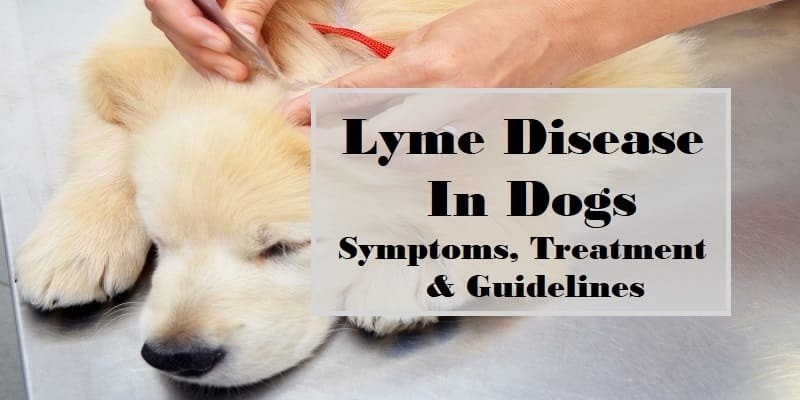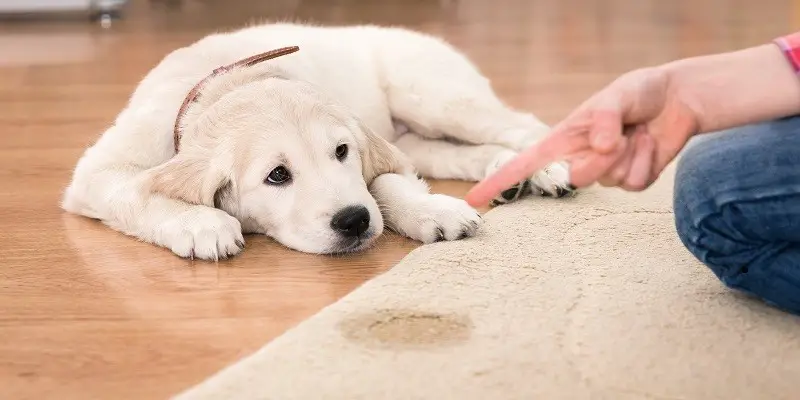Last Updated on April 14, 2022 by Pauline G. Carter
A mix between an Australian Shepherd and a Poodle, generally a Standard or Miniature Poodle, produces the Aussiedoodle. He is clever, kind, and loving at his finest. An Aussiedoodle may weigh anywhere from 25 to 70 pounds, depending on the size of the Poodle used in the cross.
Personality, Characteristics, and Behaviour
Aussiedoodles are active dogs with a moderate to a high degree of energy. They need daily walks or vigorous playing, and they are athletic enough to compete in canine sports like agility, fly-ball, obedience, and rally. They make great therapy dogs as well.
Aussiedoodles are created from two breeds that are both called canine Einsteins. Giving the Aussiedoodle a task that will keep him busy, busy, busy is in your best interests. Teach him to look for and bring you items, pull your gardening equipment around the yard, and do anything else you can think of.
Keeping him active will prevent him from seeking out his own (perhaps harmful) amusement. You will be rewarded with a fantastic companion if you begin socializing and training early and employ positive reinforcement tactics like praise, play, and food incentives.
Poodles are known for being hypoallergenic, which means they may be accepted by persons with canine allergies. Aussiedoodles are frequently marketed as hypoallergenic because of their Poodle ancestry. Allergies are caused by dander, the dead skin cells shed by all dogs, not by a specific canine coat type.
There is no scientific proof that anyone dog breeds or crossbreeds are more or less allergic than another. Some individuals with minor allergies respond to some dogs less badly, but no respectable breeder can guarantee that her dogs are hypoallergenic.
Different varieties of fur may be seen on Aussiedoodles. Some have the long, straight hair like an Australian Shepherd, while others have loose curls like a Poodle, and yet others are somewhere in the between. When it comes to grooming, they are not low-maintenance pets. Brush the Aussiedoodle at least every other day, depending on his coat type. You may need to get him cut every 8 to 12 weeks if he has a curly coat.
Companion dogs are Aussiedoodles. They need to reside in the home and never go outside since they like being around humans. One of the reasons Aussiedoodle pups are so popular is because they are so cute. Puppy mills and selfish, unscrupulous breeders love the Aussiedoodle because of its cute pups.
However, there’s no need to spend a lot of money on an Aussiedoodle. A magnificent specimen of this hybrid dog may easily be found at your local shelter or via adoption programs.
If you do decide to acquire one, choose a breeder who has done the necessary health tests to verify that her pups are free of the hereditary disorders that affect both Australian Shepherds and Poodles. While there are no certainties in life, it is an excellent strategy to reduce the likelihood of future large veterinarian expenditures.
Aussiedoodles are Prone to a Variety of Health Problems
All hybrid dogs, like purebred dogs, have the potential to have genetic health issues, just as everyone has the capacity to inherit the disease. Any breeder who does not give a health guarantee on pups, who claims that the Aussiedoodle is 100 percent healthy and has no known issues, or who claims that her puppies are kept apart from the rest of the home for health reasons should be avoided at all costs.
A respectable breeder will be forthright and honest about Aussiedoodle health issues and the frequency with which they arise in her lines.
Aussiedoodles may have health problems that affect both Australian Shepherds and Poodles, particularly if you don’t purchase from a reputable breeder. Hip dysplasia, cataracts, progressive retinal atrophy, epilepsy, autoimmune thyroiditis, and sebaceous adenitis are among them.
At the very least, demand proof that both of the puppy’s parents have hip certificates from the Orthopedic Foundation for Animals and eye certifications from the Canine Eye Registry Foundation.
Do not buy a puppy from a breeder who cannot give you documented proof that the parents have been cleared of any breed-related health issues. A “vet check” for the canines is not a replacement for genetic health testing.
How to Get a Healthy Aussiedoodle Puppy at Home?
It’s more vital to discover a reputable breeder than it is to get the perfect puppy. A competent breeder will match you with the correct puppy and will, without a doubt, have completed all of the required health certifications to filter out any potential health issues.
Consider adopting an adult dog from a shelter or rescue organization. Many health issues in Aussiedoodles aren’t visible in puppyhood, but most of them may be checked out by acquiring an adult dog. Furthermore, since Aussiedoodles live for 10 to 13 years, an adult dog will be a member of your family for a long time.
Take your Aussiedoodle to the vet as soon as possible following adoption, whether it’s a puppy or an adult. Your veterinarian will be able to detect any obvious concerns and will work with you to develop a preventative program that will help you avoid a variety of health problems. Inquire about dental care, since most toy breeds have dental issues, as well as recommendations on how to deal with tear stains.
Do not, under any circumstances, purchase a puppy from a pet shop. You’ll be supporting the brutality of high-volume puppy mills by getting a sick, unsocialized, and difficult-to-housetrain dog.
Make sure you have a proper contract in place with the vendor, shelter, or rescue organization that outlines both parties’ duties. If your state has “puppy lemon laws,” make sure you and the individual who sold you the dog are both aware of your rights and options.
Other Pets And Children
Aussiedoodles need a lot of playtime and exercise due to their feisty and intelligent personalities, which is why they make such terrific family dogs. Even so, any youngsters who may be playing with your Aussiedoodle should be taught how to engage with the dog securely.
Aussiedoodles can get along with other pets if they are introduced gently and quietly, and early socialization will help this go easily. It’s preferable if they get used to other pets as soon as possible. If there are any smaller animals around, your Aussiedoodle could attempt to herd them!
Training, socialization, and luck of the draw are all factors in how well Aussiedoodles get along with other dogs and cats.
History
Designer breeders began purposefully crossing Australian Shepherds with Poodles in the late 1990s or early 2000s, most likely in North America, to create the Aussiedoodle hybrid dog breed.
Given how intelligent, lively, and attractive the Poodle and the Australian Shepherd are, it’s easy to see why the Aussiedoodle has become so popular. Although the breed is occasionally promoted as a hypoallergenic dog for allergy sufferers, the fact is that no dog is truly hypoallergenic.
Despite the fact that the Aussiedoodle mixed breed began as a designer dog, some have ended up in shelters or in the care of rescue organizations. If you decide this is the breed for you, consider adopting.
Check your local shelters, seek out Aussiedoodle rescues, or contact breed-specific Australian Shepherd or Poodle rescues, since they sometimes take in mixed breed dogs and place them in loving homes.
How Much Do Aussiedoodle Puppies Cost?
If you want to get an Aussiedoodle puppy, be aware that you may have to spend a high price. An Aussiepoo puppy may cost anywhere from $1,500 to $5,000, with the average cost being approximately $2,500. Your puppy will not arrive with formal pedigree papers since Aussiedoodles are not registered with the AKC.
However, your puppy’s Poodle and Australian Shepherd parents should have pedigree documents from the breeder. If they’re trustworthy, they should let you witness the parents’ behavior and examine their pedigree paperwork so you know what to anticipate from your puppy.
What to Know Before Getting an Aussiedoodle: Food and Diet Requirements
When choosing dog food for your Aussiedoodle, make sure it’s intended for high-energy small to medium dogs. Look at the labels to be sure you’re feeding your dog the highest-quality food you can afford. Higher-quality dog food, like human food, tends to incorporate entire, basic components. If a kibble brand has a lot of components you don’t recognize or can’t pronounce, you should probably seek another brand.
Your Aussiedoodle’s food intake is determined by its size. Miniature Poodle heritage Aussiedoodles will need less food than a typical Aussiedoodle. You may use this common formula to determine your dog’s calorie requirements: Your dog’s calorie demands are 30 times his weight in pounds divided by 2.2 + 70. A 50-pound dog would need roughly 750 calories per day based on this estimate. Because Aussiedoodles are prone to overeating, avoid putting food out all day and restrict rewards.
Practicing
For good reason, we assigned this breed 5 out of 5 stars for energy. Aussiedoodles are high-energy dogs that need a lot of physical activity. To guarantee that your dog receives the activity he needs, set aside at least an hour each day to walk or jog with him.
Your Aussiedoodle needs a lot of cerebral stimulation in addition to physical activity. Aussiedoodles are very clever dogs that will grow bored if they are not cognitively challenged or stimulated. The Aussiedoodle may not be the breed for you if you do not believe you can devote enough time to appropriately exercising and stimulating your dog.
Due to their intelligence and desire to please their owners, Aussiedoodles are incredibly simple to teach. The best approach to teach an Aussiedoodle is to praise them for good conduct; they don’t react well to punishment or harsh methods.
You should also be aware of your words and behavior, since you may be teaching the dog things you don’t want them to learn unwittingly. If you become irritated and take it out on your dog, for example, he will learn that he cannot trust you. If you stay calm and aggressive when teaching your Aussiedoodle, he will pick up on your commands fast and gladly.
Care
The coat of your Aussiedoodle will differ based on the dog. Wavy coats are seen on certain Aussiedoodles, whereas curly coats are found on others. A dog with a wavy texture coat only has to be combed one to two times each week, on average. If like his Poodle ancestors, your dog’s hair turns out to be particularly curly, you should be prepared to groom him more regularly.
Read More
- How To Keep A Dog Busy In A Crate?
- Dog Gifts in a Box: A Unique Way to Surprise Your Furry Friend!
- Keep Your Pet Hydrated With This Portable Bottle!
About Author (Pauline G. Carter)

Pauline G. Carter is a well-known pet blogger who has written about the world of pets for several years. She is passionate about pets, from cats and dogs to birds, reptiles, and poultry. Her blog, which is updated regularly, is filled with articles and guides on pet care, nutrition, and training. She also shares her experiences and observations on pet ownership, making her blog relatable and informative for pet lovers. She is a true animal advocate and is dedicated to promoting responsible pet ownership. Let’s Go …




